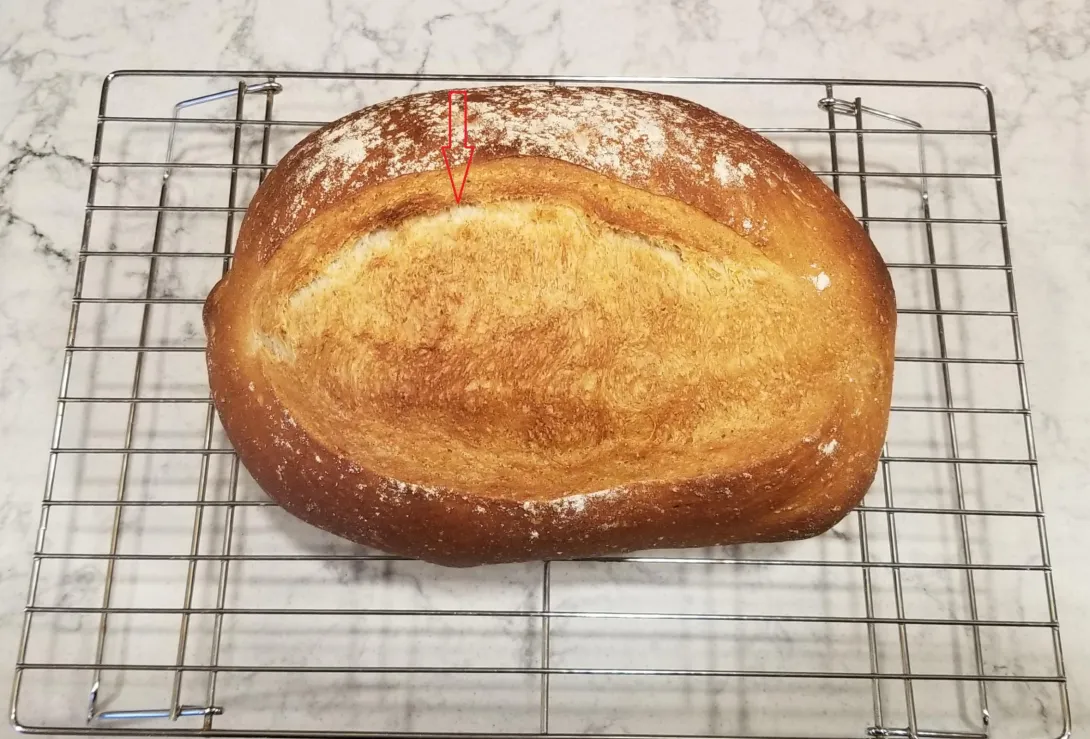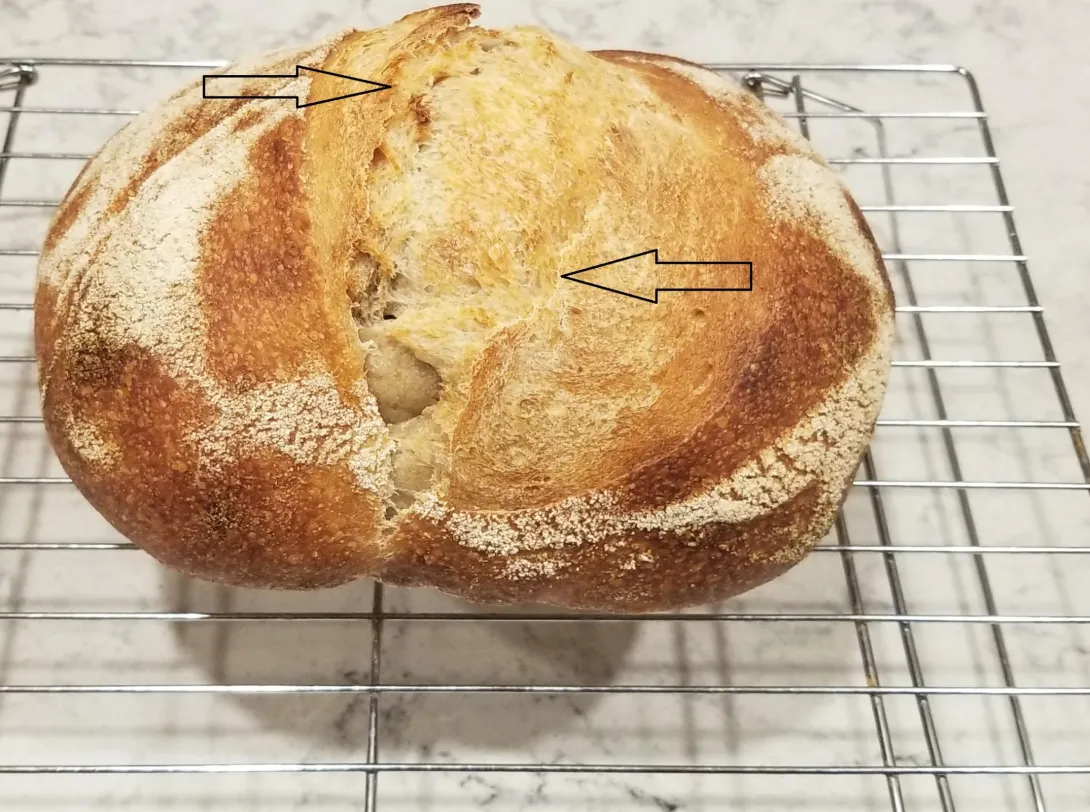I find a lot of my loaves are, for lack of a better term, "double-bursting". As in, the bread opens up where one would expect along my score line but then cracks a second time (always within the scored area, which makes sense I guess, given that would be the weakest part of the forming crust). I haven't taken any pictures aimed specifically at diagnosing this phenomenon, so the photos below are not the most pronounced versions I've seen (just the only loaf photos I happen to have), but they do both show signs of this "double-pop".
So I guess my questions is...why is my bread bursting a second time even though I've (theoretically) given a place for it to release pressure via the score? Does this mean my score is not deep enough? Too deep? Wrong angle? Or perhaps something too do with the baking process (too much/too little steam, wrong split of with steam/without steam bake time, etc)?
Thanks as always!


just a guess but do you think your gluten is strong enough? If the loaf is falling apart, maybe that's an issue.
Also that your shaping is well integrated?
Hard to know without a cross-section, but the dough looks a little weird in that open crack
I could believe that is definitely a problem with the loaf in the second photo. That's my first sourdough discussed in this thread. It has many problems beyond just this "double-burst" phenomenon :)
I think the loaf in the first photo is in pretty good shape gluten-wise, though. Other than the double-crack, it turned out pretty well. Unfortunately I don't have a photo of the crumb as I wasn't really in the habit of taking photos until Benny suggested it in one of my other threads a couple of days ago.
If this keeps happening, I'll make a point of taking additional photos (in fact, I'm probably going to start taking photos of everything just in case) that will hopefully help diagnose more effectively.
Thanks for the reply! Really appreciate your help.
Are you baking with convection mode (fan on) during any part of the bake? That always plays havoc with the crust.
--
Be sure to keep the cast iron pan off the floor of the oven. That one pic looked like it was not on a rack. That can possibly damage your oven over the long term, because it blocks proper heat flow.
In that photo, it looks like your convection oven has a hidden/covered lower heating element. You can test this by pre-heating an empty oven, and after a minute or two, place your hand near, not on, the floor and feel if any heat is coming from it. There may be holes or slits through which you can see the glowing element.
Thanks for the reply!
No, I leave the convection fan off, so I don't think that's the issue.
Good call on the cast iron pan. It is indeed directly on the bottom surface of the oven now (I used to have it on a rack, but I repurposed that one for the "top-element-blocker" and only have the two racks). I suppose it sounds like I should trade off the blocking of the top element in favour of getting the pan back onto a rack...wouldn't want to damage my oven! Thanks for the heads-up.
Besides the reasons given by David and Dave above, another reason would be underfermentation. If the dough was somewhat underfermented then you may get additional cracking or blow outs in the crust. Also, if your seam isn’t on the bottom while baking then that can cause an additional crack or blowout.
Benny
That's interesting.
We were talking in another thread about my sourdough specifically being underfermented and there seems to be no doubt about it on that one.
My yeasted loaves, though, I've been generally happy with, so it never occurred to me that they might also be showing some signs of being made by an impatient baker. I'll try to make a point of taking a lot more photos over the next couple of bakes, so it's easier to compare results as my make minor tweaks to the method.
Thanks as always!
Photos of the crumb are especially important to diagnose fermentation issues so ensure that you photograph that as well. Learning to read fermentation issues will help your baking significantly.
Benny